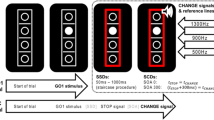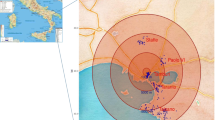Abstract
Objective
Associations between occupational styrene exposure and cognitive as well as psychomotor functions were investigated with a view to answering three questions: (1) are the published results for neurobehavioural impairment reproducible, (2) if such effects exist, are they related to current or to chronic exposure and (3) if effects exist, are there reductions in the effects during an exposure-free period.
Methods
Workers from a boat-building plant, some of whom were laminators, were investigated in groups of low (n = 83, mean mandelic acid MA + phenylglyoxylic acid PGA = 53 mg/g creatinine), medium (n = 101, 230 mg/g creat.) and high (n = 29, 928 mg/g creat.) levels of exposure to styrene. The mean job tenure was about 6 years. In addition, subgroups chronically exposed to low-short (n = 30, lifetime weighted average exposure mean 184 mg/g creat. for 6 years) and high-long (n = 16, 693 mg/g creat., 15 years) styrene levels were analyzed. The examinations were carried out during normal working days and during the company holidays. A symptom questionnaire and the tests Benton visual retention, symbol digit substitution and digit span for cognitive functions as well as choice reaction, aiming, peg board, tapping, and steadiness for psychomotor functions were administered. Co-variance analyzes with repeated measurements and linear regressions were used for statistical analysis. Co-factors were education, age, job tenure, long-term alcohol consumption, and German as mother tongue. In some cases also the activity as a laminator was considered.
Results
Symptoms were not related to exposure. The tests for cognitive functions generally revealed (all variance analyses) no exposure-related associations. Only the linear regressions of Benton test results showed significant correlation with parameters of chronic exposure which was still evident as a tendency in the work-free and exposure-free period. Most tests for psychomotor functions also revealed no relationships with exposure. However, the peg board test results showed significant correlations with chronic exposure which disappeared during holidays. The activity as a laminator––considered in addition to exposure parameters––was significant as a factor to explain the variability of psychomotor variables.
Conclusion
Acute exposures to up to 40 ppm styrene and long-term exposures to about 27 ppm averaged over a period of 15 years were not identified as being associated with an elevated risk of developing impaired cognitive and psychomotor functions or increased symptom levels with the tests applied. This statement must be qualified by two exceptions: performances in the Benton test and in a finger dexterity test were associated with parameters of long-term exposure as a dose-response relationship, but not with current exposure.

Similar content being viewed by others
References
Anger WK (1990) Worksite behavioral research: results, sensitive methods, test batteries, and the transition from laboratory data to human health. Neurotoxicology 11:629–720
Anger WK (2003) Neurobehavioural tests and systems to assess neurotoxic exposures in the workplace and community. Occup Environ Med 60:531–538, 474
Benignus VA, Geller AM, Boyes WK, Bushnell PJ (2005) Human neurobehavioral effects of long-term exposure to styrene: a meta-analysis. Environ Health Perspect 113(5):532–538
Benton AL (1990) Der Benton-test. Handbuch. Huber, Bern, Stuttgart, Toronto
Cherry N, Rogers B, Venables H, Waldron HA, Wells G (1981) Acute behavioural effects of styrene exposure: a further analysis. Br J Ind Med 38:346–350
Cherry N, Gautrin D (1990) Neurotoxic effects of styrene: further evidence. Br J Ind Med 47:29–37
Dalton P (2002) Odor, irritation and perception of health risk. Int Arch Occup Environ Health 75:283–290. doi:10.1007/s00420-002-0312-x
De Rosa E, Cellini M, Sessa G, Scapellato ML, Marcuzzo G, Bartolucci GB (1996) The importance of sampling time and coexposure to acetone and biological monitoring of styrene–exposed workers. Appl Occup Environ Hyg 11:471–475
DFG Deutsche Forschungsgemeinschaft (1985) Analyses of hazardous substances in biological in biological materials. Methods for biological monitoring. In: Angerer J, Schaller KH (eds) Aromatic carboxylic acids, vol 2. Wiley, Weinheim, pp 47–66
DFG Deutsche Forschungsgemeinschaft (2006) List of MAK and BAT values. Commission for the investigation of health hazards in the work area: report no. 42. Wiley, Weinheim
DFG Deutsche Forschungsgemeinschaft (2007) Analytische Methoden zur Prüfung gesundheitsschädlicher Arbeitsstoffe. Luftanalysen (Styrol). Wiley, Weinheim
Edling C, Anundi H, Johanson G, Nilsson K (1993) Increase in neuropsychiatric symptoms after occupational exposure to low levels of styrene. Br J Ind Med 50:843–850
Fallas C, Fallas J, Maslard P, Dally S (1992) Subclinical impairment of colour vision among workers exposed to styrene. Br J Ind Med 49:679–682
Flodin U, Ekbert K, Andersson L (1989) Neuropsychiatric effects of low exposure to styrene. Br J Ind Med 46:805–808
Gamberale F, Lisper HO, Olson BA (1976) The effect of styrene vapour on the reaction time of workers in the plastic boat industry. In: Horvath M (ed) adverse effects of environmental chemicals and psychotropic drugs. Elsevier, Amsterdam, pp 135–148
Golka K, Wiese A (2004) Carbohydrate-deficient transferrin (CDT)––a biomarker for long-term alcohol consumption. J Toxicol Environ Health 7:319–337. doi:10.1080/10937400490432400
Guillemin MP, Berode M (1988) Biological monitoring of styrene: a review. Am Ind Hyg Assoc 49:497–505
Hall TA, Rebert CS (1994) Review of neurotoxicity of styrene in humans (Letter to the editor). Vet Hum Toxicol 36:249
Härkönen H, Lindstrom H, Seppalainen AM (1978) Exposure response relationship between styrene exposure and central nervous function. Scand J Work Environ Health 4:53–59
Hogstedt C, Andersson K, Hane M (1984) A questionnaire approach to the monitoring of early disturbances in central nervous functions. In: Aito A, Riihimäki V, Vainio H (eds) Biological monitoring and surveillance of workers exposed to chemicals. Hemisphere Publ Corp, Washington, pp 275–287
Hooisma J (1992) Provisional EURONEST battery version 1.0-manual. Concert action EURONEST of the EC, TNO Medical Biological Laboratory, Rijswik
HSE Health & Safety Executive (2007). European union risk assessment report styrene––draft for submission to SCHER, November 2007, UK
Ihrig A, Triebig G, Dietz MC (2001) Evaluation of a modified German version of the Q 16 questionnaire for neurotoxic symptoms in workers exposed to solvents. Occup Environ Med 58:19–23. doi:10.1136/oem.58.1.19
Ikeda M, Koizumi A, Miyasaka M, Watanabe T (1982) Styrene exposure and biologic monitoring in FRP boat production. Int Arc Occu Environ Health 49:325–339
Jégaden D, Amann D, Simon JF, Habault M, Legoux B, Galopin P (1993) Study of the neurobehavioural toxicity of styrene at low levels of exposure. Int Arch Occup Environ Health 64:527–531. doi:10.1007/BF00381103
Jensen B, Mürer JL, Olsen E, Christensen JM (1994) Assessment of long-term styrene exposure: a comparative study of a logbook method and biological monitoring. Int Arch Occup Environ Health 66:399–405. doi:10.1007/BF00383147
Kraus PH, Przuntek H, Kegelmann A, Klotz P (2000) Motor performance: normative data, age dependence and handedness. J Neural Transm 107:73–85. doi:10.1007/s007020050006
Lehrl S, Triebig G, Fischer B (1995) Multiple choice vocabulary test MWT as a valid and short test to estimate premorbid intelligence. Acta Neurol Scand 91:335–345
Letz R (2003) Continuing challenges for computer-based neuropsychological tests. Neurotoxicology 24:479–489. doi:10.1016/S0161-813X(03)00047-0
Letz R, Pieper WA, Morris RD (1996) NES test performance in a large US army veteran sample: relationships with both demographic factors and traditional neuropsychological measures. Neurotoxicol Teratol 18:381–390. doi:10.1016/0892-0362(96)00023-2
Lezak MD (1995) Neuropsychological assessment, 3rd edn edn. HDI Publishers, Oxford
Lindström K, Härkonen H, Hernberg S (1976) Disturbances in psychological function in workers exposed to styrene. Scand J Work Environ Health 3:129–139
Mergler D, Campagna D, Belanger S, Larribe E, Huel G, Truchon G, Ostiguy C, Drolet D (1992) Neurotoxic effects among styrene-exposed workers II neurophysiological and behavioural changes. Travail Sante 8:16–21
Mergler D, Huel G, Belanger S, Bowler R, Truchon G, Drolet D, Ostiguy C (1996) Surveillance of early neurotoxic dysfunction. Neurotoxicology 17(3–4):803–812
Mizunuma K, Yasugi T, Kawai T, Horiguchi S, Ikeda M (1993) Exposure-excretion of styrene and acetone in factory workers: a comparison of a lipophilic solvent and a hydrophilic solvent. Arch Environ Contam Toxicol 25:129–133. doi:10.1007/BF00230723
Mutti A, Mazzucchi A, Rusticelli P, Frigeri G, Artini G, Franchini I (1984) Exposure-effect and exposure-response relationships between occupational exposure to styrene and neuropsychological functions. Am J Ind Med 5:275–286. doi:10.1002/ajim.4700050404
Ong CN, Shi CY, Chia SE, Chua SC, Ong HY, Lee BL, Ng TP, Teramoto K (1994) Biological monitoring of exposure to low concentrations of styrene. Am J Ind Med 25:719–730. doi:10.1002/ajim.4700250511
Pahwa R, Kalra J (1993) A critical review of the neurotoxicity of styrene in humans. Vet Hum Toxicol 35:516–520
Rebert CS, Hall TA (1994) The neuroepidemiology of styrene: a critical review of representative literature. Crit Rev Toxicol 24:57–106. doi:10.3109/10408449409020142
Schuhfried G (2001) Wiener Reaktionsgerät––Grundprogramm. Dr. G. Schuhfried GmbH, Mödling
Seeber A, Blaszkewicz M, Golka K, Hallier E, Kiesswetter E, Schäper M, van Thriel C (2004) Neurobehavioral effects of experimental exposures to low levels of styrene. Toxicol Lett 151:183–192. doi:10.1016/j.toxlet.2003.12.072
Seeber A, Bruckner T, Triebig G (in press) Occupational styrene exposure, colour vision and contrast sensitivity: a cohort study with repeated measurements. Int Arch Occup Environ Health
Seitz G, Stickel F, Fiehn W, Werle E, Simanowski UA, Seitz HK (1995) Kohlenhydrat-defizientes Transferrin. Ein neuer, hochspezifischer Marker für chronischen Alkoholkonsum. Dtsch Med Wochenschr Sect 120:391–395
Ska B, Vyskocil A, Tardif R, Carrier G, Thuot R, Muray K, Viau C (2003) Effects of peak concentrations on the neurotoxicity of styrene in volunteers. Hum Exp Toxicol 22:407–415
Smeets MA, Dalton P (2000) On the influence of personality on health symptom reporting to environmental exposure. Aroma-Chology Rev 8:1–10
Triebig G, Bruckner T, Seeber A (2008) Occupational styrene exposure and hearing loss: A cohort study with repeated measurements. Int Arch Occup Environ Health. doi:10.1007/s00420-008-0355-8
Triebig G, Lehrl S, Dwelte D, Schaller KH, Valentin H (1989) Clinical and neurobehavioural study of the acute and chronic neurotoxicity of styrene. Br J Ind Med 46:799–804
Tsai SY, Chen JD (1996) Neurobehavioral effects of occupational exposure to low-level styrene. Neurotoxicol Teratol 18:463–469. doi:10.1016/0892-0362(96)00035-9
Viaene MK, Veulemans H, Masschelein R (1998) Experience with a vocabulary test for workers previously and still exposed to styrene. Scand J Work Environ Health 24:308–311
Viaene MK, Pauwels W, Veulemans H, Roels HA, Masschelein R (2001) Neurobehavioural changes and persistence of complaints in workers exposed to styrene in a polyester boat building plant: influence of exposure characteristics and microsomal epoxide hydrolase phenotype. Occup Environ Med 58:103–112. doi:10.1136/oem.58.2.103
Watson D, Clark LA (1988) Development and validation of brief measures of positive and negative affect: the PANAS scales. J Pers Soc Psychol 54:1063–1070. doi:10.1037/0022-3514.54.6.1063
Wolf K, Bienfait HG, Brohmann P, Brucksch E, Stanetzek I, Teuffel-Schilling C, Albracht G, Au M, Bolm-Audorff U (2000) Styrolbelastung von Beschäftigten in der Polyesterharz verarbeitenden Industrie. Arbeitsmed Sozialmed Umweltmed 35:312–315
Acknowledgments
The authors gratefully acknowledge the participation of all workers and the support of the management, the assistance of Gudula Christ, Jörg Geier, Andreas Ihrig, Stefan Knohl, Ismail Arslan, Steffen Sandermann, Holger Zimmer, Heidi Ludwig and Ralf Debernitz in the examinations, air and biomonitoring and first documentation of data. They also wish to thank Sylvana Müller for independent quality assurance of the study, Heinz-Peter Gelbke, and George Cruzon as well as Abby Lee and Robert Sielken as consultants for study advice. The project was sponsored in part by the Styrenics Steering Committee (SSC), Belgium and the Styrene Information and Research Center (SIRC), USA. The authors thank all collaborators, consultants and sponsoring associations for their valuable support during the various phases of the project.
Author information
Authors and Affiliations
Corresponding author
Rights and permissions
About this article
Cite this article
Seeber, A., Bruckner, T. & Triebig, G. Occupational styrene exposure and neurobehavioural functions: a cohort study with repeated measurements. Int Arch Occup Environ Health 82, 969–984 (2009). https://doi.org/10.1007/s00420-008-0382-5
Received:
Accepted:
Published:
Issue Date:
DOI: https://doi.org/10.1007/s00420-008-0382-5




